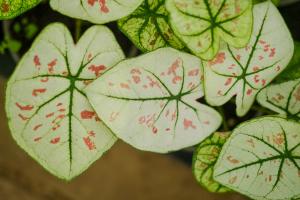How to Plant Elephant Ear Bulbs Indoors
If you're looking for a striking plant to add some drama to your indoor space, elephant ear plants may be just what you need. These tropical plants are known for their oversized, heart-shaped leaves that can reach up to three feet in length. Planting elephant ear bulbs indoors is not difficult, but it does require some care and attention. Here's how to plant elephant ear bulbs indoors:
Preparing the Soil
The first step in planting elephant ear bulbs indoors is to prepare the soil. These plants prefer well-draining soil that is rich in organic matter. You can use a standard potting mix or create your own by mixing equal parts potting soil, peat moss, and perlite.
Fill a container that has drainage holes about two-thirds full with the potting mix. Use a container that is at least six inches deep to accommodate the large size of the bulbs.
Planting the Bulbs
Once the soil is prepared, it's time to plant the bulbs. Lay the bulb on its side and cover it with soil, leaving the pointed end of the bulb exposed. Water the soil until it is moist but not waterlogged.
If you're planting multiple bulbs in one container, space them about six inches apart to allow for growth. Cover the bulbs with two inches of soil and water thoroughly.
Caring for Elephant Ear Plants
After planting, elephant ear plants need consistent care to thrive. Here are some tips for keeping your plants healthy:
1. Water: Elephant ear plants prefer moist soil but do not like to be waterlogged. Water the plant regularly, but allow the soil to dry slightly between waterings.
2. Light: These plants need bright, indirect light to thrive. Place your pots in a spot that gets bright, filtered light for best results.
3. Humidity: Elephant ear plants prefer high humidity environments, so regular misting or using a humidifier can help keep them healthy.
4. Fertilizer: Apply a balanced, water-soluble fertilizer once a month during the growing season.
5. Pruning: If your plants become too tall or leggy, they may need to be pruned back to encourage bushy growth. Use clean, sharp scissors to trim the stems just above a leaf node.
Enjoying Your Elephant Ear Plants
With proper care, your elephant ear plants should begin to sprout leaves within a few weeks of planting. These plants can grow quickly and may require repotting into larger containers as they outgrow their initial homes.
When the plants are mature and producing new leaves regularly, they are a stunning addition to any indoor space. Whether you use them to add a pop of personality to your living room or to create a statement piece in your hallway, elephant ear plants are sure to make a dramatic impact in your home.

 how many times do yo...
how many times do yo... how many planted tre...
how many planted tre... how many pine trees ...
how many pine trees ... how many pecan trees...
how many pecan trees... how many plants comp...
how many plants comp... how many plants can ...
how many plants can ... how many plants and ...
how many plants and ... how many pepper plan...
how many pepper plan...































